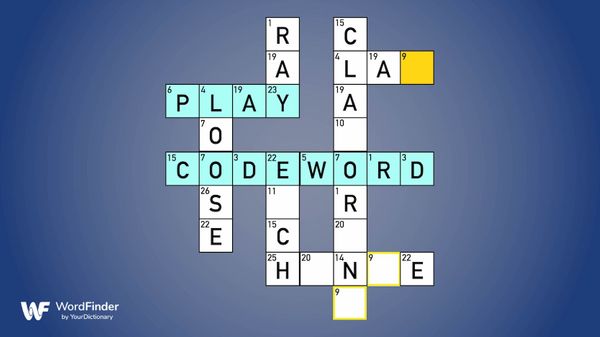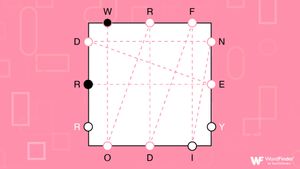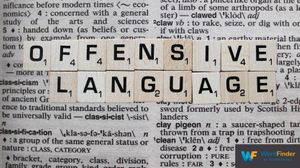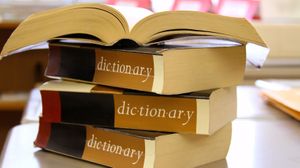Play Codeword: A Puzzle Game Built Like a Word Search

Adapted from Getty Images
The Big Secret About Codeword
At first glance, Codeword looks like a crossword puzzle game. But, when you start to play and realize that there are no crossword clues and some of the letters are already filled in, you’ll realize this is a much different game.
To best understand it, Codeword is like playing a word search game on a crossword puzzle grid. You need to find the missing letters, unscramble words, and fill in the puzzle grid. Do this using a mix of trial-and-error and word memorization.
Daily Codeword Puzzles and Rankings
One of the more enjoyable features of Codeword is that new challenges are available every day, just like finding daily Wordle answers. The daily Codeword puzzles give you a reason to keep coming back to the game with the promise of new tests of your skills.
Plus, if you sign into the game, the scores for each puzzle are added to your total. This allows you to compete with other players around the world for top spots on the daily, weekly and monthly leaderboards. You can ignore this part of the game if you want, but the competition is there if that’s something you enjoy.
Where to Play Codeword
Codeword is an Arkadium game. Arkadium is a game development company that shares the game on their own site, but they also license the game to other companies. If you want to visit a quality site to play the official Arkadium Codeword game, try one of these options:
Arkadium.com is the original home site of Codeword, plus other classic games.
Bestforpuzzles.com is a site dedicated to fun and clever puzzle games.
Washingtonpost.com is a premier news site that also offers many fun word games.
Readersdigest.ca is a general interest site with various free-to-play licensed games.
How to Play Codeword
The game doesn’t follow conventional word game patterns. Even so, the rules for solving Codeword puzzles are simple and only take a moment to learn.

A game of Codeword begins with an interconnected grid of blank squares running in columns and rows. Each square had a number in its top-left corner.
The game populates some of these squares with a few letters. In turn, it adds that letter to other squares with matching numbers. For example, if the game gives you the letter R to start, and that R goes in the number 4 square, then every other square with a 4 will automatically fill with an R as well.
When you think you know what letter is supposed to go in a blank square, click on the square and press the key of the letter you want (or press the letter button on the screen).
When you add a letter to a square, that letter will automatically appear in every other square with the same number. In other words, each number corresponds to just one letter.
Repeat the process of adding letters and seeing which squares they appear in to determine what the hidden words are. When you fill all of the squares, the game will tell you if you’ve won or if one or more of the letters are in the incorrect spots.
Once you’ve placed all of the letters in the correct squares, you win the game and can share your score for that day.
Codeword Tips and Tricks
As with any worthwhile word game out there, Codeword has its fair share of strategy. If you want to win and do so in record time, you can’t just play random letters and hope that they are the right ones. You need to use these reliable and consistent tactics.
Use the checker when needed: At the top of the screen, you’ll find a button you can press to check if a specific letter is in the right place. Using this checker does affect your win percentage in the game, but it’s worth using if you cannot figure out which letter belongs in a certain square.
Don’t focus on just one section: One temptation while playing is to start in one section of the grid and complete the words in a path. That’s not usually the best option. You need to pay close attention to the entire grid and see where letters appear to determine what words you can spell first.
Pay attention to unused letters: To the right of the puzzle, you’ll find all 26 letters of the alphabet. They start out in blue-colored squares. As you use them on the grid, the squares turn gray. Being able to see the letters you’ve used (and the ones still available) can help you decide which letters to try next. Plus, these squares also contain the corresponding numbers, which makes picking the right letter even easier.
Watch those numbers: The numbers in each square help you determine which letter to use. Use the process of elimination. Let’s say you have “??ad” on one part of the grid, with the first two letters missing, there are several options for what it could be. All you know is that the first letter is a 7 and the second is a 19. On a different part of the grid, you might have “r?m??m?r,” with 7s and 19s as well. The only word you can think of for the second word is “remember,” so the first word must be “bead.”
Let WordFinder help: If one of the words simply refuses to let you find all of its letters, let our word finder make quick work of it. You can type the letters you have into the search bar to find every word you can create with them. To refine your search, use the advanced search filters to pick the word length, starting letters and ending letters.
More Fun With Fill-It-In Puzzles
Playing daily Codeword puzzles is a refreshing change of pace from the typical crossword puzzle style. Rather than being a master of trivia, you need to be a master of spelling patterns. Now, if you’d like to play a game that tests your ability to make words fit together in the right order, you should try some of fill-it-in word games too. These games also play like crossword puzzle. The big difference is that instead of clues, the games provide the answers. What you need to do is figure out where they go on the grid.
Zac Pricener has been a content creator for the past eight years. He’s a bit of an all-around nerd, and he has a bad habit of working movie and TV show references into conversations whenever possible.



